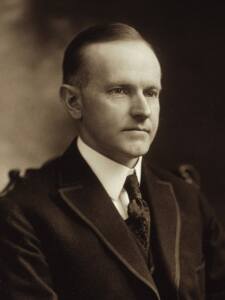Lead
In Elizabeth, New Jersey, 1924, the automobile industry was booming. It was discovered if a small quantity of tetraethyl lead, developed in the 1850s, was added to gasoline, fuel burning became more efficient, engines ran cooler and quieter, and they had more horsepower.
Before this, tetraethyl lead was not widely used, because it was easily absorbed in the body and people stayed away from lead as it was already a well-known poison. However Standard Oil and General Motors worked together to provide leaded gasoline but they called it ethyl gasoline instead because of the fear people had of lead. With 6 billion gallons of gasoline sold in the U.S every year, General Motors and Standard Oil would make a massive profit if that gasoline was leaded.
Unfortunately, numerous employees began behaving as if they were going insane and some even dying. At a press conference held in New York City with Thomas Midgley, the inventor of leaded gasoline, demonstrated he could wash his hands in tetraethyl lead and be fine. The Ethyl corporation insisted it was harmless but public health authorities were still concerned and asked for the help of New York Medical Examiner Charles Norris and his team of scientists.
Walter Dymock, an employee at a lead gasoline producing factory, walked out of a bedroom window and died on October 28, 1924. To prove lead poisoning was Dymock’s cause of death, Alexander Gettler, a toxicologist in Norris’ office, had first to confirm lead was in his body. To isolate lead in a transparent solution, Gettler processed some of Dymock’s brain tissue and added chemicals. Depending on the concentration of lead present, the solution would turn a shade of red; a deep, dark red indicated a high concentration and a light, bright red indicated a low concentration. Gettler confirmed Dymock did, in fact, have absorption of lead in his brain tissue and his next task was to precisely measure the concentration.
The shade of red from Dymock’s sample was compared to reference samples. The concentration level from Dymock was so high, a device known as a colorimeter that measured color intensity, could not provide accurate readings. Since color could not be used to determine how much lead had been absorbed in the brain, Gettler assessed he must isolate a new sample of lead and weigh it. Once a precise value was known, Gettler had to examine the lead’s pathway through Dymock’s body. In a lengthy process, the same techniques that were used on Dymock’s brain were used on his bones, blood, lungs, liver, and kidneys. Through this analysis, Gettler discovered the cause of death to be chronic tetraethyl lead poisoning.
Norris publicized the shocking amount of lead found in Dymock’s body and insisted lead be taken out of gasoline. Soon, New York City, Philadelphia, and New Jersey banned ethyl gasoline. Before the ban could spread, Standard Oil and General Motors asked President Calvin Coolidge for assistance in showing the ethyl gasoline was not to be as dangerous as Norris claimed. Coolidge rounded up a team of industry scientists and in January 1926, they reported gloves, masks, and other safety precautions for employees was enough to control the dangers of production and that the exposure to the public was low. Their findings led to the federal government to lift all restrictions on leaded gas sales.
Back to Forensic Investigation
Back to Crime Library


